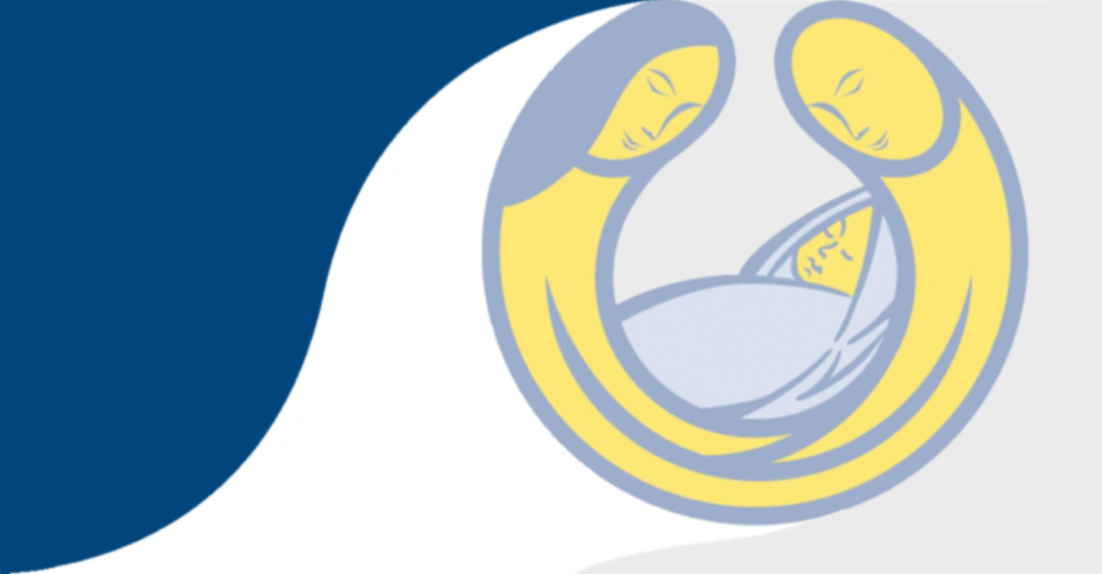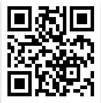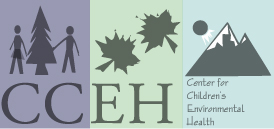About Autism
What is autism?Autism is one of a group of disorders known as autism spectrum disorders (ASDs). ASDs are developmental disabilities that cause substantial impairments in social interaction and communication and the presence of unusual behaviors and interests. Many people with ASDs also have unusual ways of learning, paying attention, and reacting to different sensations. The thinking and learning abilities of people with ASDs can vary from gifted to severely challenged. An ASD begins before the age of 3 and lasts throughout a person's life.
ASDs include autistic disorder, pervasive developmental disorder - not otherwise specified (PDD-NOS, including atypical autism) and Asperger syndrome. These conditions all have some of the same symptoms, but they differ in terms of when the symptoms start, how severe they are, and the exact nature of the symptoms. The three conditions, along with Rett syndrome and childhood disintegrative disorder make up the broad diagnosis category of pervasive developmental disorders.
Who gets autism?
ASDs occur in all racial, ethnic, and socioeconomic groups and are four times more likely to occur in boys than in girls. CDC’s Autism and Developmental Disabilities Monitoring (ADDM) Network released data in 2007 that found about 1 in 150 8-year-old children in multiple areas of the United States had an ASD.
When can autism spectrum disorders be detected?
ASDs can often be detected as early as 18 months. While all children should be watched to make sure they are reaching developmental milestones on time, children in high-risk groups—such as children who have a parent or brother or sister with an ASD—should be watched extra closely. A child with any of the warning signs of ASDs should be checked by a health care professional.
Research shows that early intervention can greatly improve a child’s development. CDC is working with national partners on a public awareness campaign to educate parents about how important it is to track their child’s development in the first few years of life. The campaign, “Learn the Signs. Act Early,” teaches parents, health care professionals, and child care providers about early childhood development, including early warning signs of autism and other developmental disabilities.
How is it caused?
We have learned a lot about the symptoms of ASDs and have improved efforts to track the disorders, but we still don’t know a lot about the causes of ASDs. Scientists think that both genes and the environment play a role, and there might be many causes that lead to ASDs.
Family studies have been most helpful in understanding how genes contribute to autism. Studies have shown that among identical twins, if one child has autism, then the other will be affected about 75% of the time. In non-identical twins, if one child has autism, then the other has autism about 3% of the time. Also, parents who have a child with an ASD have a 2%–8% chance of having a second child who is also affected. (Boyle C, Van Naarden Braun K, Yeargin-Allsopp M. The Prevalence and the Genetic Epidemiology of Developmental Disabilities. In: Genetics of Developmental Disabilities. Merlin Butler and John Meany eds. 2004 (Table 3, p. 716-717)) (Muhle R, Trentacoste V, Rapin I. The Genetics of Autism. Pediatrics 2004;113;472-486).
For most people with ASDs, the cause is not known, though ASDs tend to occur more often than expected among people who have certain other medical conditions, including Fragile X syndrome, tuberous sclerosis, congenital rubella syndrome, and untreated phenylketonuria (PKU)
Some harmful drugs taken during pregnancy also have been linked with a higher risk of autism; specifically, the prescription drug thalidomide
CDC's Centers for Autism and Developmental Disabilities Surveillance and Epidemiology (CADDRE) are working together on a large, population-based study to better understand the possible risk factors for and causes of autism. Called the Study to Explore Early Development (SEED), this project will help answer the many questions regarding the causes of autism.
What are the signs and symptoms?
As the name "autism spectrum disorders" suggests, ASDs cover a wide range of behaviors and abilities. People who have an ASD, like all people, are very different in how they act and what they can do. No two people with ASDs will have the same symptoms.
People with ASDs have serious impairments with social, emotional, and communication skills. They might repeat certain behaviors again and again and might have trouble changing their daily routine. Many people with ASDs also have different ways of learning, paying attention, or reacting to things. ASDs begin before the age of 3 and last throughout a person's life. It is important to note that some people without ASDs might also have some of these symptoms. But for people with ASDs, the impairment is bad enough to make life very challenging.
Social Skills
Social impairments are one of the main problems in all of the ASDs. People with ASDs do not have merely social “difficulties” like shyness. Their severe social impairments often cause serious problems in everyday life. These social problems are often combined with the other areas of deficit, such as communication skills and unusual behaviors and interests. For instance, the inability to have a back-and-forth conversation is both a social and a communication problem.People with ASDs might not interact with others the way most people do. They might not be interested in other people at all. Some might want friends but have social problems that make those relationships difficult. They might not make eye contact and might just want to be alone. Many children with ASDs have a very hard time learning to take turns and share—much more so than other children. This can make other children unwilling to play with them.
People with ASDs may have problems with expression, so they might have trouble understanding other people's feelings or talking about their own feelings. Many people with ASDs are very sensitive to being touched and might not want to be held or cuddled. Self-stimulatory behaviors, common among people with ASDs, may seem odd to others or make them uncomfortable, causing them to shy away from a person with an ASD.
Social issues such as trouble interacting with peers, saying whatever comes to mind even if it’s inappropriate, difficulty adapting to change, and even poor grooming habits can sometimes make it hard for adults with ASDs to get and/or keep a job at their intellectual level. Anxiety and depression, which affect some people with ASDs, can make existing social impairments even harder to manage.
Communication
Each person with an ASD has different communication skills. Some people may have relatively good verbal skills, with only a slight language delay with impaired social skills. Others may not speak at all or have limited ability or interest in communicating and interacting with others. About 40% of children with ASDs do not talk at all. Another 25%–30% of children with autism have some words at 12 to 18 months of age and then lose them. Others may speak, but not until later in childhood.People with ASDs who do speak may use language in unusual ways. They may not be able to combine words into meaningful sentences. Some people with ASDs speak only single words, while others repeat the same phrases over and over. Some children repeat what others say, a condition called echolalia. The repeated words might be said right away or at a later time. For example, if you ask someone with an ASD, "Do you want some juice?" he or she might repeat "Do you want some juice?" instead of answering your question. Although many children without ASDs go through a stage where they repeat what they hear, it normally passes by age 3. Some people with ASDs can speak well but may have a hard time listening to what other people say.
People with ASDs may have a hard time using and understanding gestures, body language, or tone of voice. For example, people with ASDs might not understand what it means to wave goodbye. Facial expressions, movements, and gestures may not match what they are saying. For instance, people with ASDs might smile while saying something sad. They might say "I" when they mean "you," or vice versa. Their voices might sound flat, robot-like, or high-pitched. People with ASDs might stand too close to the people they are talking to, or might stick with one topic of conversation for too long. They might talk a lot about something they really like, rather than have a back-and-forth conversation with someone. Some children with relatively good language skills speak like little adults, failing to pick up on the “kid-speak” that is common in their peers.
Repeated Behaviors and Routines
Unusual behaviors such as repetitive motions may make social interactions difficult.Repetitive motions are actions repeated over and over again. They can involve part of the body or the entire body or even an object or toy. For instance, people with ASDs may spend a lot of time repeatedly flapping their arms or rocking from side to side. They might repeatedly turn a light on and off or spin the wheels of a toy car in front of their eyes. These types of activities are known as self-stimulation or “stimming.”
People with ASDs often thrive on routine. A change in the normal pattern of the day—like a stop on the way home from school—can be very upsetting or frustrating to people with ASDs. They may “lose control” and have a “melt down” or tantrum, especially if they’re in a strange place.
Also, some people with ASDs develop routines that might seem unusual or unnecessary. For example, a person might try to look in every window he or she walks by in a building or may always want to watch a video in its entirety—from the previews at the beginning through the credits at the end. Not being allowed to do these types of routines may cause severe frustration and tantrums.
How is it treated?
No two people with ASDs are exactly alike. So, each person with an ASD needs a treatment program to meet his or her individual needs and the needs of his or her family. While there is not yet a cure for ASDs, early, intensive treatment can help children with the disorder reach their full potential. Acting early can make a big difference! For guidance on choosing a treatment program, visit the Treatment Options section of the National Institute of Mental Health’s autism website.
It is important to remember that children with ASDs can get sick or injured just like children without ASDs. Regular medical and dental exams should be part of a child’s intervention plan. Often it is hard to tell if a child’s behavior is related to the ASD or is caused by a separate health condition. For instance, head banging could be a symptom of the ASD, or it could be a sign that the child is having headaches. In those cases, a thorough physical exam is needed.
Even if your child has not been diagnosed with an ASD, he or she may be eligible for early intervention services. The Individuals with Disabilities Education Act (IDEA) says that children under the age of 3 who are at risk of having substantial developmental delays may be eligible for services. These services are provided through an early intervention system in your state. Through this system, you can ask for an evaluation. To learn more about early intervention, click here National Dissemination Center for Children with Disabilities.
* Information courtesy of the Center for Disease Control http://www.cdc.gov/ncbddd/autism/index.htm




